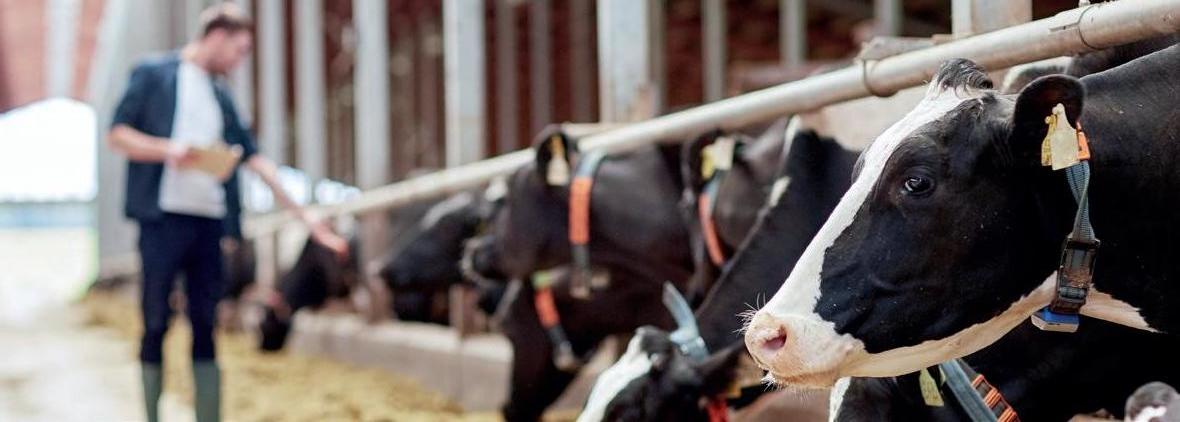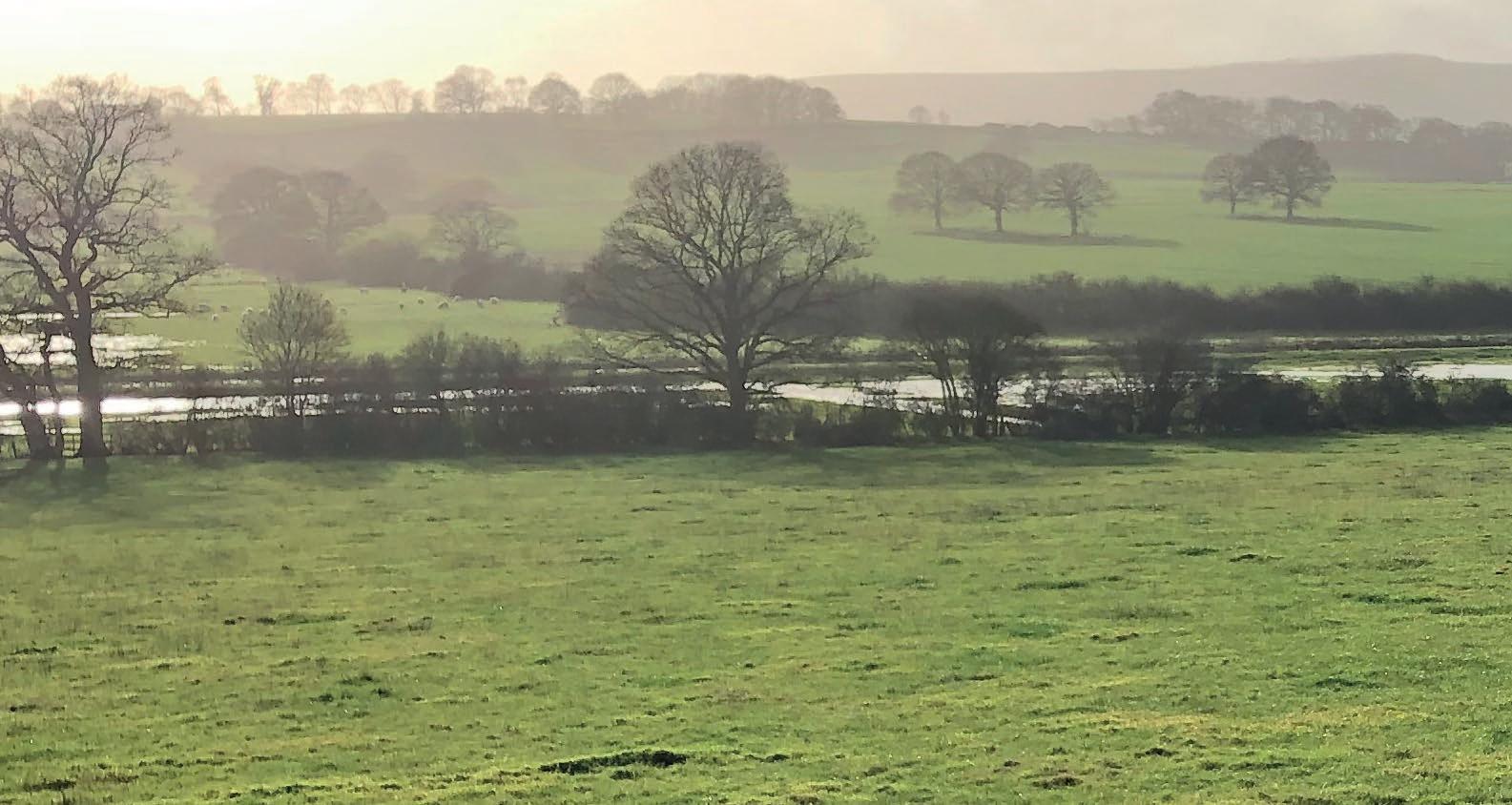
6 minute read
Carbon farming
LIFESTOCK’S
carbon challenge
Livestock farming has a carbon headache. Charles Abel reviews a key report from the Centre for Innovation Excellence in Livestock
THE latest report to examine the livestock sector’s carbon headache is by turns fascinating, scary and sometimes very heavy going. But powerful insights pepper it – essential for any livestock business keen to remain relevant as the world adapts to a lowcarbon future.
The take-home message from the national consortium of experts led by Dr Elizabeth Magowan, of Northern Ireland’s Agri-Food and Biosciences Institute is unequivocal – there’s a lot livestock farming can do, but it will struggle hugely to hit net zero.
The complex biology makes it tough enough. But inefficiency, slow technological progress, poor knowledge transfer, under-investment and a paucity of reliable data exacerbate the problem.
Key drivers
The Committee on Climate Change wants agriculture and land-use to cut greenhouse gas emissions by 64% to support the UK’s drive for net zero by 2050. To take its share of the burden livestock farming needs to chop a whopping 18.6Mt CO2-eq from its 2018 baseline emissions.
How doable is that? The CIEL report says currently available cost-effective mitigation strategies might cut total agricultural emissions by 7.1Mt CO2-eq by 2035. That’s less than a fifth of what’s needed, leaving 15 years to deliver the remaining 80%! It’s a stark contrast to the NFU’s ambitious 11.5MtCO2-eq reduction by 2035.
With almost half of all agricultural emissions coming from ruminant livestock, especially methane, the sector clearly has its work cut out.
Efficiency
A glimmer of cheer is that carbon output per unit of production is well below many other countries. So, whilst UK dairying has Europe’s third worst total carbon footprint, it ranks sixth best when scaled to yield.
It is also argued that carbon footprints should be measured against the nutritional benefit of produce, not just weight. Nutritional density, or digestibility and bioavailability, should be the real bottom lines, something the National Food Strategy is expected to embrace.
Shrinking the livestock sector is not an option. Reducing exports of carbon-efficient produce, and importing less carbon-efficient products from overseas, would be counter-productive. That is highlighted by data showing the global average grassland beef system generates 99kgCO2-eq for every 1 kg of meat produced, compared to 48kgCO2-eq in the UK. The figures for lamb (40kg v 37kg), milk (3kg v 2kg), pigs (12kg v 12kg) and poultry (10kg v 10kg) tell a similar story.
The best prospect for pursuing net zero seems to be efficiency. Spreading emissions across more output helps. Implementing best practice across
CIEL Report Consortium
Aberystwyth University, Agri-food and Biosciences Institute, Bangor University, Duchy College, Harper Adams University, University of Leeds (SMART Agri-food Systems), Newcastle University, Queen’s University Belfast (Institute for Global Food Security), Rothamsted Research, Scotland’s Rural College, University of Nottingham, UK Centre for Ecology & Hydrology, University of Edinburgh (Global Academy of Agriculture and Food Security), University of Bristol (Bristol Veterinary School)
www.cielivestock.co.uk/net-zero-carbon-and-uk-livestock/
the lowest performing flocks and herds could bring a 30% carbon improvement to the sector, the report suggests.
Which targets are right?
The picture is further muddied by GHG accounting systems. Inventory accounting used in net zero targets considers UK emissions only. Life cycle assessment, by contrast, includes emissions associated with inputs from overseas, like imported fertilisers and animal feed.
Replacing home grown feedstuffs with imported equivalents would cut the UK’s inventory carbon footprint, but such ‘offshoring’ of higher carbon footprints would hit global emissions, which seems illogical.
On-farm actions
The report gives helpful insights into opportunities for each livestock sector, with a lot of comparative data for different systems, and a guide to actions that could help most, and at what financial cost, or indeed benefit.
On-farm efficiency, using existing technology, can make better use of fertilisers, feeds and manures. But much greater improvements are needed, in animal husbandry, plant and animal breeding, and livestock health, welfare and productivity. The carbon impact of ill-health is also significant.
Novel and alternative feeds offer huge potential upsides, especially with lower carbon footprints from feed production and use, and diets and feed ingredients/supplements designed to improve nutrient use, and reduce methane emissions.
Better understanding of microbial ecology in ruminants may help cut methane, through microbial manipulation and a reduction of methane-producing archaea (single-cell organisms) by gut microbial programming or dietary supplements.
Use of home-grown feeds (especially protein), will reduce reliance on imported soya and the impacts associated with deforestation. Use of co- and by- products in livestock feeds will also help.
Better use of nitrogen fertiliser is needed, through new formulations, including environmentally friendly nitric acid production, nitrification inhibitors, and urease inhibitors, coupled with improved timing, application rates, and soil management. Better species mixes in grassland hold promise, such as N-fixing legumes or deep-rooting grassland plants.
Smart technology and precision farming opportunities include animal genotyping and phenotyping, greater understanding of the rumen microbiome, precision feeding and precision animal surveillance, land use and manure management, including remote sensing to guide nutrient use.
Big picture
Carbon capture, collaboration with other sectors and lots of innovation are clearly going to be needed. But net zero isn’t farming’s only challenge and must not impair other sustainability metrics, including food security/quality, nutrient management, animal welfare, biodiversity, the viability of rural communities and farm profitability.
Clearly, being well informed will be vital. CIEL’s report helps - download it now!
Carbon Cutting
From 70+ potential options 24 measures were identified as having the most cost effective mitigation potential, including: • Probiotic feed additives • Livestock health • Spring not autumn manure • Ruminant nutrition spreading • Anaerobic digestion • Precision farming • Preventing + removing • Organic N planning soil compaction • Breeding (animals + plants) • Afforestation on • Legume-grass mixes agricultural land
Carbon Capture
Additional carbon sequestration by farm woodlands and hedgerows and the role of improved soil health both need crediting to the livestock sector. However, their benefits may not be as great as hoped, since new woodland plantings won’t have their greatest impact on carbon removals until post-2050 and many grassland soils are already close to carbon equilibrium. So-called bioenergy-with-carbon-capture-and-storage (BECCS) using biomass production adjacent to domestic power stations could be useful, once the technology is ready and economical, requiring as little as 0.1-0.7ha to remove 1tC-eq/year
Bringing It Together
Carbon cutting decisions need support: 1. Emissions reporting to target emission hotspots, produce more effective interventions and recognise beneficial interactions, rather than simply pitting sector against sector 2. Calculation methods to reduce uncertainties, including a better appreciation of methane’s warming effects (evidence suggests it lasts just 12-15 years, unlike carbon dioxide and nitrous oxide, which last hundreds of years) 3. Whole-system understanding so other sustainability metrics do not suffer and trade-offs are identified and correctly understood
What Next?
• Carbon accounting tools need to be more transparent, more accurate, and more widely used, so farmers can track and reduce on-farm emissions and offsetting The report compares current options, including AgRE Calc, Cool Farm
Tool and Farm Carbon Calculator. None is perfect. A lack of granularity and failure to include embedded carbon in inputs is a recurring weakness • Significant investment to develop mitigations and carbon capture, with modelling to test economic and environmental impacts, so informed regional action plans can be developed • Education, knowledge exchange and adoption must accelerate, to fully exploit current, proven approaches, with evidence-based advice. Barriers to adopting new approaches need addressing, with incentives, including financial










